130 MILLION YEARS AGO
The first flowering plants spread throughout the world.
120 to 80 MILLION YEARS AGO
The mid-Cretaceous period is marked by a series of oceanic anoxic events (OAEs). To understand how these events occur it might be worth discussing the phosphorus cycle and how it affects all living things.
The complete phosphorus cycle requires a combination of geological, biological and chemical factors to be present in order for phosphorus to be effective at maintaining long-term health (and size) of all animals of the vertebrate kind as well as plants of all species.
The cycle begins through the familiar geological route of volcanism spewing large quantities of lava and hot ash on land to help create fertile soils. Here the phosphorus levels are abundant (1). Plants grow happily in these soils as this is how they can absorb phosphorus, among other essential chemical elements, in the presence of adequate water and certain fungi and other microbes in the soil to assist in the efficient uptake of these elements through the root systems. As the healthy plants grow, some of it is eaten by herbivores where a certain amount of phosphorus is used to build the all-important genetic storage molecule DNA and its messenger RNA, as well as in the development of healthy and strong bones and teeth. This in turn gets taken up in the bodies of predators consuming the herbivores and so benefiting from the phosphorus for the same reasons. A certain amount of phosphorus does get lost in the animals' excrement, and the rest is returned to the soil upon death to hopefully maintain the cycle from a purely biological perspective. However, high levels of rainfall and/or limited ground cover from plants may expose the fertile soils to greater erosion, or see some of these chemical elements reach the river systems. Depending on the landscape and how rivers flow, much of this material in the soil from decaying animal and plant matter and the excrement left behind get washed out to sea (if not deposited in large deltas). If unusually high levels of phosphorus start to accumulate in relatively stagnant waters, green algae can grow in vast quantities. While algae blooms may technically produce oxygen, this is not dissolved in the water. Furthermore, when the algae dies, decomposition of this material and other organic matter will cause a depletion of oxygen levels in the water. Then we have a situation were animals with gills living exclusively in the oceans die in these oxygen-deprived waters, leading to what is known among scientists as an oceanic anoxic event (OAE). Otherwise, other animals in the water that can breathe in oxygen from the atmosphere will tend to absorb (and probably grow larger) and later deposit the phosphorus to the sea bed once they die. Finally, to fully complete the long phosphorus cycle, global climate change (usually a cooling of the planet) and/or movements in the tectonic plates or volcanism can lower sea levels and/or raise the plates to a height that allows the sea bed to be exposed to the weather. Here, the phosphorus can be dissolved and released back to the plants and ultimately to the animals that feed on the plants.
As can be seen, the phosphorus cycle is certainly important to the development of healthy animal and plant life. More specifically, a deficiency in phosphorus levels in the soil can lead to poor growth, smaller fruits, and leaves will change to a blue colour with some purple tinge. For animals, it just simply means strong bones are compromised or cannot support large animals.
Low phosphorus levels for plants is not a common disorder, but it can occur. The disorder is most prevalent in areas of high rainfall such as in equatorial rainforests. Also, acid, clay or poor chalk soils tend to have limited amounts of phosphorus. Thus a region of phosphorus poor soils can produce not only less food for plant-eating animals, but it can also make it harder for larger animals to survive.
Speaking of animals, we know that phosphorus does help to build strong and durable bones and teeth. In the early periods when dinosaurs began to colonise the continent, the animals grew very large thanks to a substantial amount of phosphorus and calcium to build massive bones. Later, the levels of phosphorus in the soil would go down. Any significant reduction in this vital chemical element would probably not favour the development of large animals, or would seriously curtail their lifespans (i.e., a higher risk of brittle bones developing and poorer quality teeth to munch through the tougher fibrous plant materials).
Now we see this exact situation of lower levels of phosphorus being played out in the Cretaceous period. Less phosphorus in the soil means smaller plants adapted to the lower levels of nutrients, resulting in a more open savannah-like environment unless there is a geological mechanism to help close the phosphorus cycle and so re-establish the chemical element to support larger plants (usually through the process of volcanism). The dinosaurs themselves would also have to adapt to these phosphorus deficient conditions, including a smaller body size requiring less bone material to support the lower weight. (2)
Could this phosphorus deficiency explain the smaller size of most dinosaurs in the Cretaceous period compared to those that lived in the Jurassic period? Perhaps a test of the chemical composition of fossilised bones of the few remaining larger Cretaceous dinosaurs living in areas considered to be opening up to these savannah landscapes (probably in temperate latitudes) and comparing them to similar sized fossils from dinosaurs of the Jurassic period may help to reveal a difference in the ratio of phosphorus and calcium. If so, an x-ray fluorescence spectrometer would be the ideal tool to assist with this task.
With all this phosphorus and decomposing organic matter reaching the oceans from large river systems, Handoh & Lenton (2003) have noted periodic oceanic anoxic events (OAEs) occurring in the late Jurassic (160-150Ma) and mid-cretaceous (120-80Ma), and possible in the Paleocene (65-61Ma) and Miocene (approximately 15Ma). These events could indicate high levels of phosphorus in the oceans for promoting the growth of green algae, which begs the question as to how much phosphorus was present on land and whether a depletion of this essential element could be the leading cause for OAEs. In the Cretaceous, it would appear phosphorus levels were going down in the soils in certain parts of the world and somehow ended up in the oceans at certain times in high quantities.
Follmi (1996) has suggested another possible OAE around 93.5Ma before returning to normal following the burial of phosphorus in the sea bed. These periodic events does strongly suggest heavy leeching of phosphorus on land was taking place as decomposing organic matter gets washed away into river systems and eventually into the oceans, only to be replenish by some geological means after more than half a million years.
Focussing on the mid-Cretaceous period, Handoh & Lenton also noted that OAEs at this time were "remarkable because of their number and recurrence at fairly regular intervals". They claim OAEs occurred at approximately 120Ma, 112Ma, 99Ma, 91Ma, and 87Ma, and usually last less than half a million years before a full recovery of oceanic conditions is achieved. Compared this to the Jurassic period, for instance, and it appears the only OAE documented occurred around 183Ma, according to Gronstal (2008) and Pearce et al (2008). It means that, for some reason, there had been heightened OAEs around the middle of the Cretaceous period.
Looking beyond all this study into OAEs, we see the work does have some rather important ramifications for humans today. Indeed, it is worth noting that phosphorus deficiency on land is playing an increasingly serious problem in the 21st century. Phosphorus is definitely ending up in the oceans from man-made fertilisers. Already there is talk of just three countries in the world (one of them is Morocco) having the last remaining natural "on land" sources of phosphorus. Other countries, notably New Zealand, are considering drilling for phosphorus from the ocean bed to support its agricultural industry. Combine this with global warming and melting of the Arctic/Greenland and Antarctic ice and we will also see a slowing down of the ocean currents, especially in the Northern Atlantic as the temperature differentials of the water at different latitudes are reduced, resulting in more stagnant waters appearing in different regions. Any extra phosphorus entering these waters at this point will probably see a return of another OAE with the likely subsequent deaths of numerous marine animals if they do not migrate to other parts of the world's oceans.
This is the sort of situation we can all expect to face very soon given the way humans are managing the planet at the moment.
94 MILLION YEARS AGO
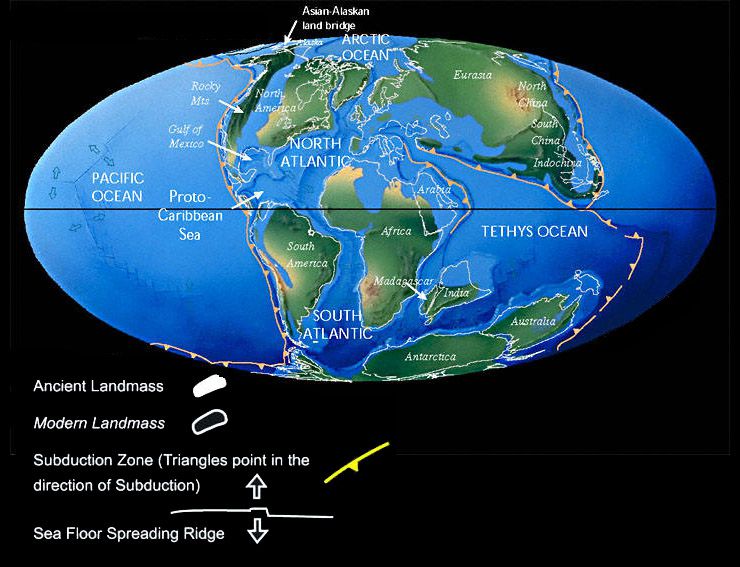
Beginning in the early Cretaceous and culminating about 92 million years ago, the final breakup of Pangea took place, leading to rapid and quite significant seafloor spreading and a release of a massive amount of carbon dioxide from the interior of the planet. As a result, extreme warmth saw the planet virtually free of polar ice caps. Indeed, tropical temperatures extended to extremely high latitudes as indicated by fossils of a crocodile-like creature known as champsosaurs found in late Cretaceous sediments north of the Arctic circle. This creature understandably avoids at all cost extended periods of sub-freezing temperatures, so finding fossils at such high latitudes gives evidence of an unusually warm period. These warmer conditions would continue to persist well into the Eocene period.
With the polar ice caps fully melted, sea levels had risen sufficiently to cause low-lying areas in central United States to get flooded (known as the Western Interior Seaway extending from Texas into British Columbia). By 94 million years ago, the Tethys Ocean covered the southern parts of Europe, and so effectively separating the continents of Laurasia from Gondwana.
It should be noted that there had already been a break up of Gondwana with India — already an island — moving away from what would effectively be Antarctica today and was now situated at the equator. India would continue to advance northward, colliding with Asia and forcing a new mountain range to develop known as the Himalayas. Whereas Africa and South America was nearly completely separated from each other at this time.
As all these geological and climatic events took place, dinosaurs still dominated the landscape, but not as great in sizes as had been the case during the Jurassic period. A diminishing forest size and greater treeless "savannah-like" environment (i.e. mostly ground-covering ferns competed well for the light) also meant there was less food available to support very large animals on land. Combined with lower phosphorus levels in the soil needed to build large and strong bones for very big animals, a time came when the massive plant-eating and carnivorous dinosaurs of the Jurassic Period gave way to smaller and more agile dinosaurs of the Cretaceous period.
It should be noted that the savannah landscape in the Cretaceous period is not like what we see in central Africa today. Elizabeth A. Kellogg published an article in the American Society of Plant Physiologists titled "Evolutionary History of the Grasses", March 2001, Volume.125, Number 3, pp.1198-1205. In it, she stated:
"The earliest firm records of grass pollen are from the Paleocene of South America and Africa, between 60 and 55 million years ago." (Source: http://www.plantphysiol.org/content/125/3/1198.full)
This meant that herbivores of the dinosaur kind did not eat grasses in the Cretaceous period.
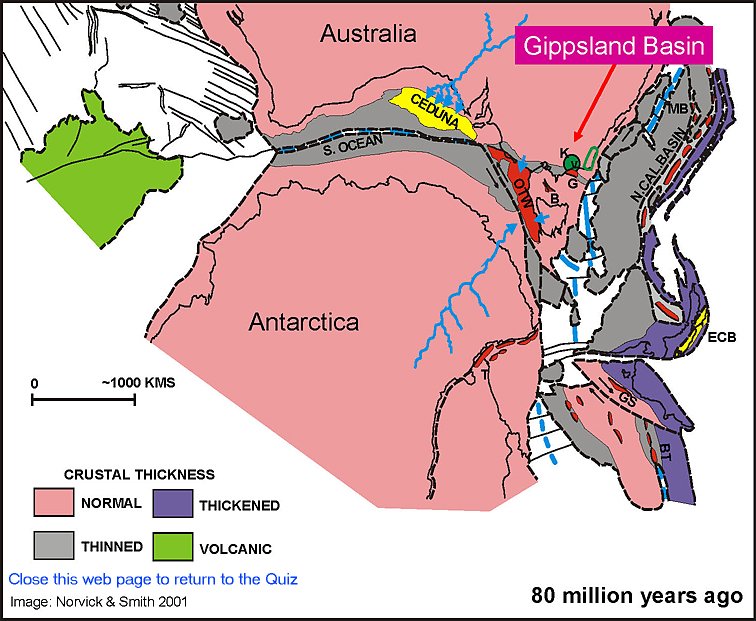
75 MILLION YEARS AGO
Since the rise in sea levels created isolated communities, dinosaurs had diversified into unique forms based on their location.
Focusing on Australia for a moment, we see extensive inundation of the Australian continent by water at this time. Later, the water slowly regressed to form a large inland sea (several times the size of Tasmania) covering much of the enormous depression of central Australia (first formed during the Triassic and Jurassic Periods). The inland sea contributed significantly to the rainfall along the Blue Mountains in the summer time. The mountains acted as a collection point to gathering back up a lot of the rains to pass down to the rivers that eventually reached back to central Australia or to the coast. This continuous evaporation, humid air falling as rain over the mountains, and the water returning to help replenish the large inland sea eventually turned the water source into freshwater. Regression of this inland sea continued as certain changes in the Australian environment was taking place. It would appear the number of trees were thinning out. Climate change? Or the impact of certain animals? Or was the weathering down of the Blue Mountains reducing the probability of rain occurring? Difficult to tell. The process of a diminishing inland sea appear to have been accelerated during the Pleistocene Epoch with the arrival of the first aborigines from Asia with their knowledge of fire and its application to the landscape resulting in a further thinning out of the forests and greater exposure of water on the ground to evaporation.
Today, the only remains of this inland sea is a small body of water called Lake Eyre (3). Every 10 to 20 years the lake gets filled up during La Nina weather patterns where the odd heavy rainfall along the western side of the Blue Mountains is substantial enough to see this regeneration of the central inland sea take place. When it happens, the rain tends to return and persist for longer in the summer months as the cycle of moist air from the centre of the continent is brought back to the mountains, which in turn as sent back through the rivers to central Australia and the coasts. This is the only time humans get a sense of what it was like many millions of years ago.
The presence of a well-filled Lake Eyre or inland sea is essential to keeping Australia moist and wet. Without it and much of the south eastern corner of Australia quickly turns into one of the hottest and driest regions during the summer months. The terrible bushfires we see in this part of the world are a natural consequence of this limited humidity and rainfall coming from the centre of the continent. If humans living on this continent are to ever see a return to these heavy rainfall periods, they will have to employ technology to pump water into central Australia to bring back this natural water cycle system.
70 MILLION YEARS AGO
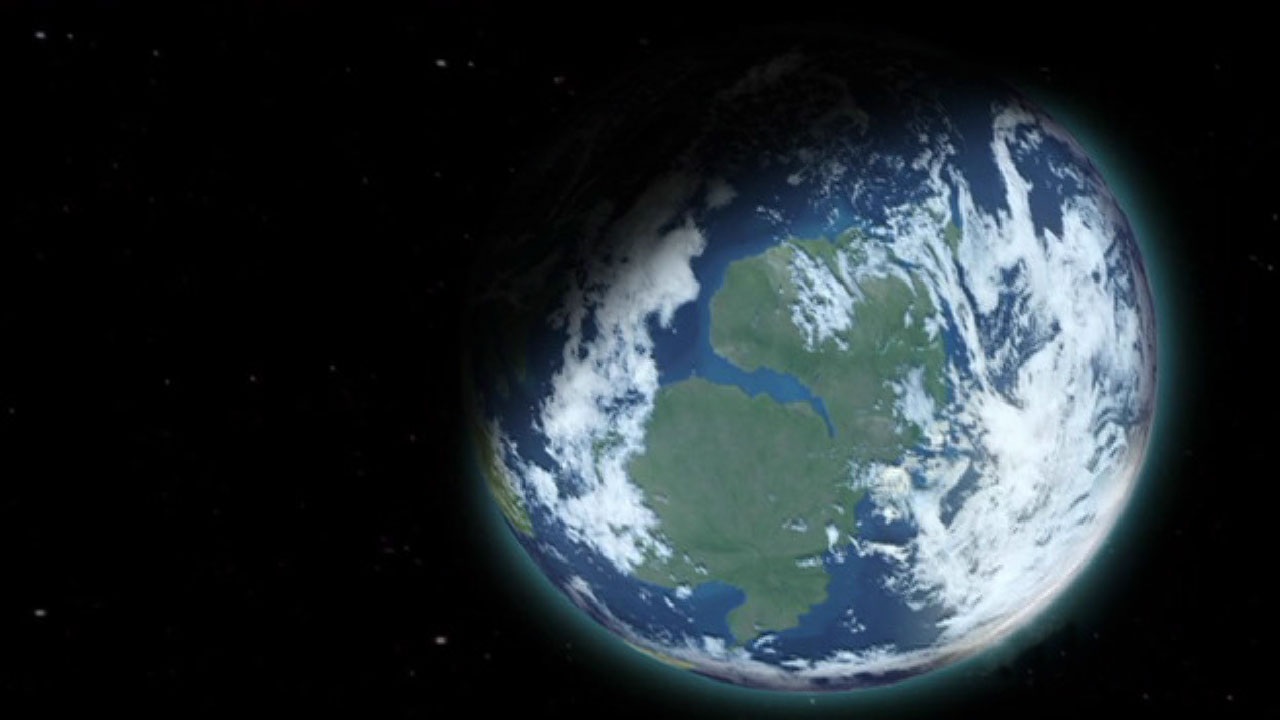
Globally speaking, Professor Allan Graham from the Biological Sciences and Geology at Kent State University stated on page 191 in Late Cretaceous and Cenozoic History of North American Vegetation: "…the climate of the Late Cretaceous through the Early Eocene was warm, equable, and maritime. Coastal assemblages show that megathermal conditions (MAT> 20°C) extended to about 48° N."
Also any cold regions were not considered extensive by any means. As Graham confirms on page 191: "Areas of microthermal temperatures were highly restricted and at times possibly limited only to mountains in the polar latitudes (Wolfe, 1987)."
Therefore, on the whole, prior to the late Cretaceous, conditions were warm. However, by the late Cretaceous were definitely getting cooler compared to the Jurassic "hothouse" period, but still considered warm by today's standards.
Perhaps the exception to these constantly warm conditions is the southern ancient continent formed by Antarctica and Australia in the southern hemisphere. Given how significantly far south this continent was, it would create distinct seasonal changes from the relatively cold (with snow) in the winter, especially over much of Antarctica and southern Australia, to the warm and moist conditions in summer (with less seasonal variation in the far northern parts of Australia). This meant that dinosaurs over this continent had to cope with different seasons and the resultant variation in temperature. And, in fact, we learn, according to Anusuya Chinsamy-Turan of the University of Cape Town, South Africa, that the cell structure of reptilian bones show evidence of having responded to climate change on a seasonal basis as well as periods of variability in the food supply.

For example, when food is scarce, a distinctive and narrow growth ring appears showing reduced growth in the bone structure. On the other hand, when food is plentiful, the growth of the bone is quicker leading to the less prominent and more spread out growth ring.
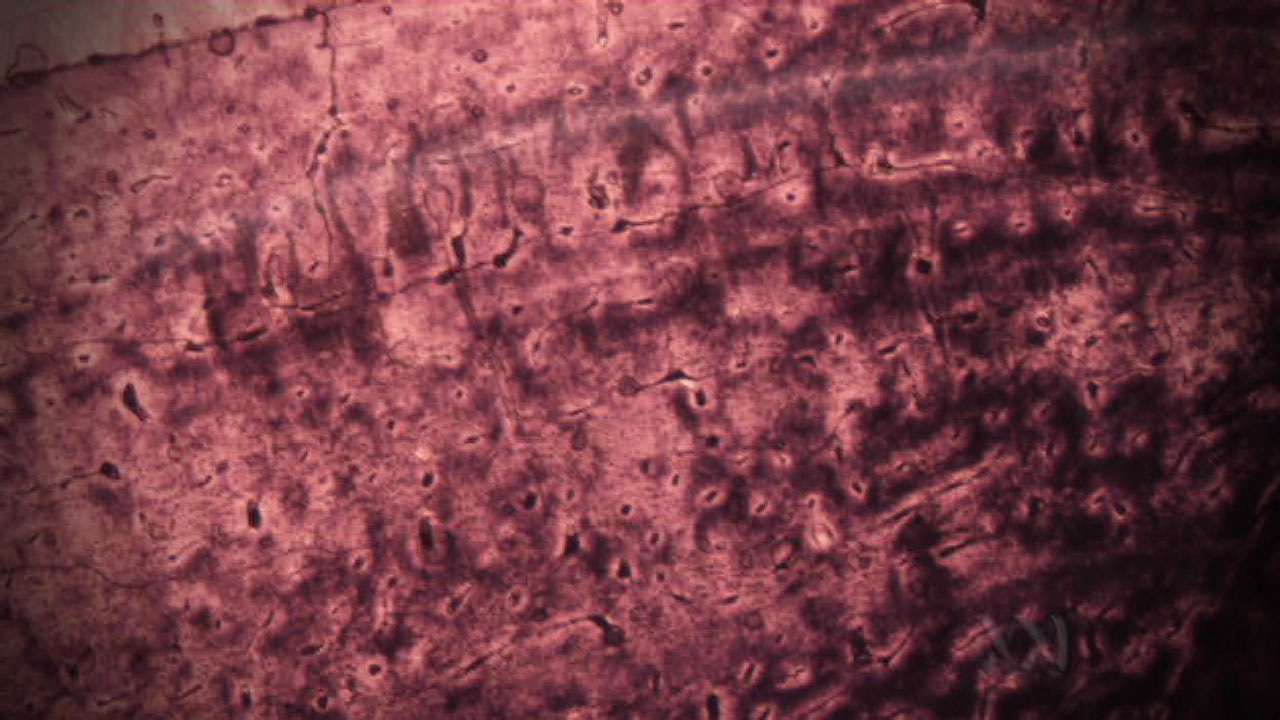

These rings can be attributed to variation in climate change, suggesting food became naturally scarce in winter, and in the summer it became more plentiful. However, it should be noted that other factors can produce these rings. For example, a larger and less agile reptile is likely to have growth rings in its bones than a smaller and more agile and active reptile.
When dinosaur bones of those that once lived in the southern continent of Antarctica and Australia dated to this period were analysed, scientists discovered that they can have growth rings and no growth rings. Where the dinosaurs have no growth rings, it is usually because the animals have access to a plentiful supply of food all year around (perhaps these animals migrated or were mobile enough to gain access to the plentiful food in one area — mainly in the northern parts of Australia). Where the growth rings exist, something in the environment would see the dinosaurs go without food for a period of time before the food supplies returned in abundance.
In the case of the cell structure of bones from a common plant-eating dinosaur known as Hadrasaurs found on the continent of Antarctica and in the land mass lying over the Arctic region (to become Alaska today), Chinsamy-Turan noticed there were no growth rings. These are relatively large animals about the size of a bus whose bones are found in relatively cold polar regions of the planet (suggesting that these were deposited at the time the creatures died during the summer period).
Scientists are certain Antarctica would have experienced snow in the winter time. Yet these dinosaur bones discovered on this continent showed no growth rings. Likewise the same thing can be observed for dinosaurs found in the Arctic region. Why?

Either these allegedly cold-blooded dinosaurs had somehow found a way to adapt themselves to the cold and still had access to plenty of food, or they constantly migrated to follow the warmer conditions.
The former case seems less likely for the following reason: During winter in the Antarctic continent, darkness and intense cold would persist for months. Just to add to the woes of these plant-eating animals, plant life would have entered a dormant stage in the winter, thereby ensuring limited production and growth of leaves. If the growth rings in bones are non-existent and are suppose to grow at the same rate, then it means the temperature in the environment must be warm and constant and have access to regular food. Furthermore, these hadrasaurs are not noted for having fur on their skins to keep them warm during the winter. Without an adequate internal heat-generating mechanism to adapt to the cold, most scientists are now fairly certain that these polar dinosaurs (especially the larger ones) had probably migrated from Antarctica into Australia to follow the warmer weather and more lushes plant life in the winter time and would only return south again to give birth to new offsprings as well as enjoy slightly cooler conditions compared to the equatorial regions in the summer. Furthermore, the conditions for migration had to be warm enough. Otherwise the bones of polar dinosaurs must show evidence of growth rings, which they do not. The large dinosaurs had to be on the move to follow the warmer weather.
If dinosaurs did migrate, the larger variety of creatures would have to produce one or two relatively large offsprings in the early summer months near the polar regions (the time when there would be less predators around). As soon as they were born, the offsprings needed to eat a substantial amount of food to gain rapid growth while the parents protected them from the numerous smaller predators that followed the migratory herd and were living in the polar regions (compared to those near the equator, which tended to be larger and probably no less ferocious than those living in the polar regions) until they were ready to make the long journey to follow the warmth.
Therefore, the discovery of bones with no growth rings in Antarctica suggests a number of polar dinosaurs died naturally from old age or natural disasters, or were attacked by predators during the warmer months (and not during the winter). This is currently the most logical explanation.
64.5 to 66 MILLION YEARS AGO
A large piece of rock or rocks travelling at 72,000 kilometres per hour made its way from the asteroid belt region (perhaps dislodged and sent hurtling through space by a comet impact) to affect life on Earth at this time. The impact created by this unwelcome rocky visitor lead to a massive extinction of animal and plant life throughout the world.
In the days and few weeks following the impact (which unleashed the energy equivalent of a billion Hiroshima atomic bombs going off at once), virtually all the great dinosaurs that ever existed throughout the world had been vaporised, burned or, as time passed, starved or froze to death. Although the number of dinosaurs were already on the decline in various parts of the world nearly 100 million years ago for reasons we have discussed earlier in this page, scientists are convinced that at least one large asteroid (and quite possibly accompanied by a few smaller ones) was responsible for the eventual demise of the dinosaurs at around this time. Among the animals to have perished were many early marine birds, all of the largest to mid-range plant- and meat-eating dinosaurs both on land and in the oceans (not enough large animals near the water's edge to grab for food meant the available nutrients, protein and energy needed to sustain large animals in the water were not there, so the largest animals eventually starved to death), all of the remaining smaller dinosaurs during the mini-ice age period that ensued when the sky was covered with dust and sulfur (except for some birds and smaller reptiles, such as the crocodiles, that made use of tree trunks, lakes, oceans and underground burrows to stay warm and possibly hibernate) perished. Much of the plant species that lived on or near the watery environment faced significant hardships. Most of the plants on land also perished as massive forest fires ripped through the continents (but not enough to reach temperatures high enough to destroy the next generation of seeds buried in the ground). In total, a massive 75 per cent of all species had perished within a few months of the impact.
The asteroid probably weighed a trillion tonnes. Either that, or the damage was greater because it crashed to Earth at high speeds into what was essentially a couple of hundred metres of shallow waters next to the land mass forming part of the Yacatàn peninsula in central America (4). This is considered by the scientists as the worse case scenario as an impact of this magnitude over what was essentially on land (with little water to settle the dust and reduce temperatures) would have thrown up a lot of dust and chemicals (mostly sulfur from the vaporised gypsum in the ocean bed) into the atmosphere. If the asteroid had landed deep in the ocean of the Pacific or Atlantic, things would have been different. The worst would have been several massive tsunamis of several hundred metres high and perhaps a bit of an earthquake to shake certain parts of the Earth, but the death toll would have been much less, and there would have been every chance the dinosaurs could have continued to survive. Not so on this occasion. Not so lucky for the dinosaurs, but fortuitous for the mammals that would emerge from the ashes and from their hibernation burrows to dominate the planet.
Knowing the impact was essentially over land for the most part, the consequences to life was almost indescribable to say the least. To give an idea of what would have happened immediately on impact of the asteroid, the hypersonic speeds of the asteroid material began the first process of killing off numerous animals larger than a cat that was walking on the land by the way it heated the atmosphere and literally putting the sky on broil, making it difficult for the animals near the impact site to breathe. Their lungs would have been cooked. The collision itself would have shook up the ground significantly, creating what would have been among Earth's biggest and most prolonged earthquakes up to 12 on the richter scale within 300 miles of the impact site. A killer blast wave of highly compressed and heated air travelled from the epicenter at 12 miles per second destroying all life within a radius of 100 miles of the impact site in a time frame of less than 10 seconds, and nearly all the dinosaurs up to a radius of 300 miles in 25 seconds. For those animals up to a distance of 900 miles from the impact site, a great many of them perished due to hot glass spherules ejecta (a mixture of dust, seabed material and the remains of the asteroid heated to phenomenally high temperatures and turning into a glass-like material) falling back to the ground and burning the dry leaves leading to vast forest fires. And if that wasn't enough to shake things up for the animals near the impact site, those animals unfortunate enough to be close to the impact site had to contend with several mega-tsunamis of between several hundred to a thousand feet high travelling 200 miles inland to drown the few surviving land-based animals. Soon after, the massive and intense heat wave travelled right around the world and ignited extensive world-wide forest fires. Still, more was to come. In the months that followed, an intense mini-Ice Age prevailed over much of the planet as dust, smoke and an incredible amount of sulfur compounds got thrown up into the upper atmosphere to screen out the sunlight. When the sky was finally cleared of the pollution within a few months, massive global warming greater than we will experience this century by humans with our desire for burning fossil fuels took place. The warming at this time would last at least a thousand years.
As for the dinosaurs living on the opposite side of the planet from where the impact site was, their fate was not with heat and fire. It would be the terrible and intense cold and lack of sufficient food to support their large bodies. A drop in world temperatures by as much as 48 degrees would have been devastating for most animals sitting on the surface of the ground. As dinosaurs had no internal heating mechanism to keep warm, even for those few smaller dinosaurs that could better adapt to the cold in Antarctica and Australia (they were joined together at this time), none could withstand the sudden drop in temperatures. Any modestly large dinosaur still roaming around looking for enough food would face a painful death. Indeed, so serious was the cold period that it effectively contributed to the extinction of the last remaining land-based dinosaurs and anything that depended on the dinosaurs for its existence.
Those land-based animals that could survive underground inside caves or burrows to hibernate, or lived in a large enough reservoir of water away from the multiple tsunamis with enough food in it (which meant the animals had to be relatively small), during the cold had the best chance of surviving the disaster.
Animals living in deep oceans also had a reasonable chance of survival so long as their food supply wasn't entirely reliant on large land-based animals. Otherwise, the death of much of the plankton in the oceans during the intense cold and darkness probably contributed significantly to the death of many marine life. The best chances were for those with small body sizes requiring less food and hence less energy to stay alive and keep warm.
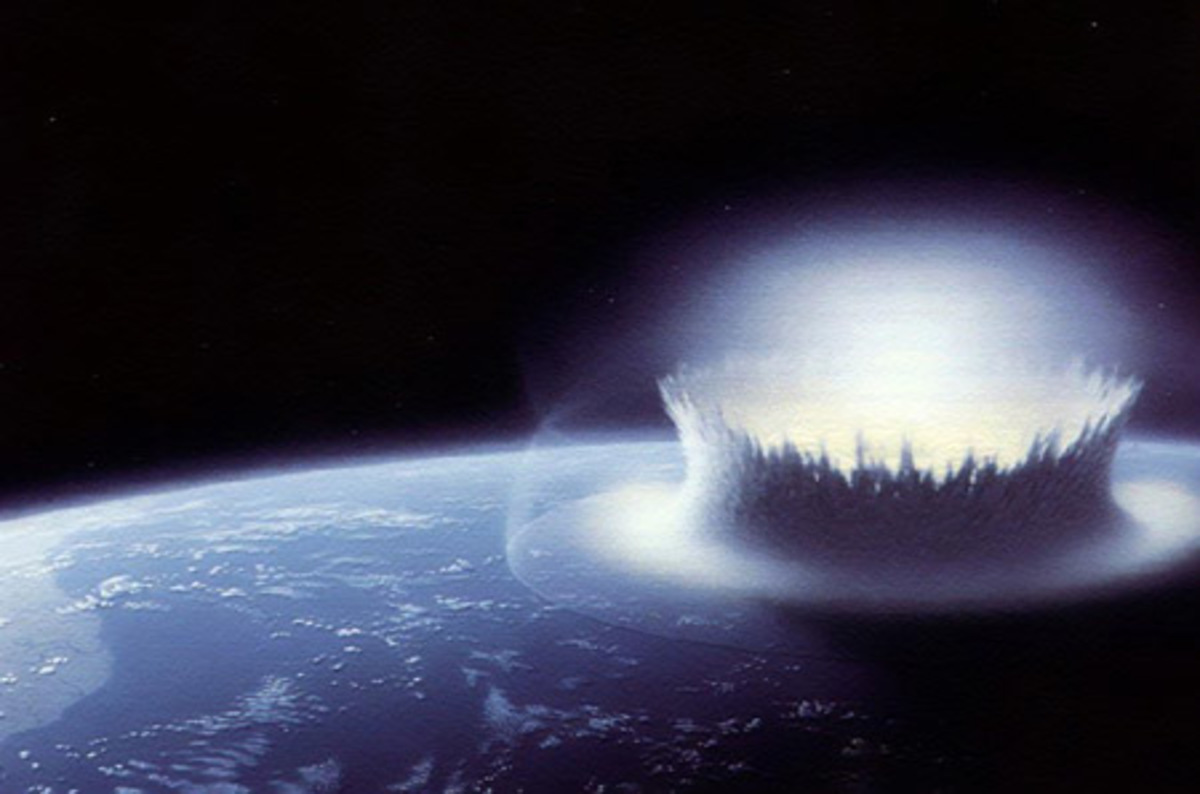
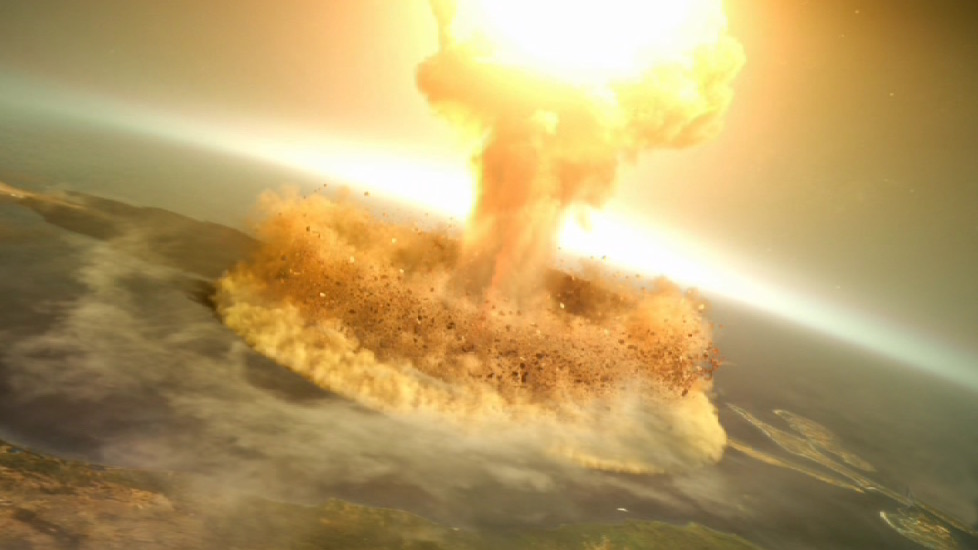
According to a team of geologists led by Dr Walter Alvarez, the asteroid collided with the Earth in an area now covered by the Gulf of Mexico. Within 90 seconds of the impact, the asteroid left a hole in the Earth nearly 18 miles deep and 110 kilometres across.
Further studies by other scientists have provided additional information about the asteroid. We can now state confidently that the asteroid size ranged from 9 to 16 kilometres in diameter (probably closer to 12 kilometres) travelling at over 40,000 miles per hour (or around 12 miles per second) when it entered the atmosphere from the south-east before colliding with the Earth at a 30 degree angle to the ground. All this information has been determined after careful analysis of high speed impacts of projectiles hitting sand, mathematical models simulating the impact and the shape of the debris plume using supercomputers, and the way fossilized debris has been distributed in the layer corresponding to this moment of history.
As for evidence for an asteroid impact, the element iridium is known to be rare on Earth but is common in asteroids. At the K-T layer (as scientist call it) corresponding to 64.5 million years ago, much higher concentrations of this rare element have been detected at sites around the world. Scientists such as paleobotanist Kirk R. Johnson, Ph.D. attribute this observation to the arrival of a massive asteroid hitting the Earth.

Further evidence for the impact can also be seen at the crater site itself near the Yacatàn peninsula. Here, scientists have found from core samples drilled deep into the ocean bed shocked quartz inside granite rocks that can only be formed under extreme heat and pressures for a very short period of time as occurs during an impact of a rock at high speeds (or the detonation of a nuclear bomb, but we all know the dinosaurs did not have nukes).
In conclusion, scientists are quite certain that at least one asteroid had collided with the Earth at this time. And it was a particularly devastating one indeed.
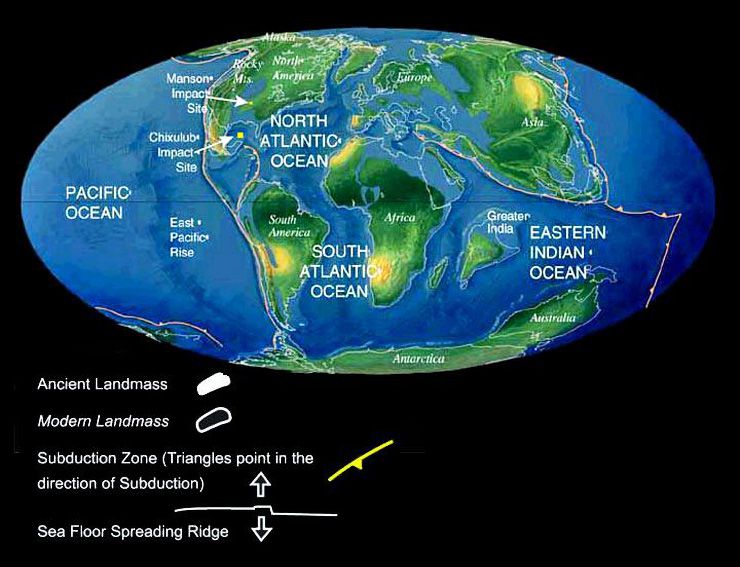
In total, nearly 76 percent of species (including all the dinosaurs) and 47 percent of genera disappeared.
One of the few living descendants of the ruling reptiles is the crocodile (mainly the smallest variety of species, as anything much larger would not have the food supply to support their body mass and required energy levels to stay alive). Crocodiles have survived to the present-day thanks to their locality (found mainly in the tropics), size (a small body requiring less food), and adaptation to a watery environment (water maintains a reasonably constant and relatively warm temperature). A number of birds also survived if they were small and had extensive feathers, and could keep themselves protected from the cold inside certain caves, hollow trees etc. For other animals, hibernation and living underground where the temperatures remained liveable and constant probably played a crucial role in their survival during this apocalyptic event.
During the mini-Ice Age, the seas retreated at this time. Those areas of land covered shallowly by sea water quickly dried up. (5)
UPDATE
26 October 2006
A team of paleontologists led by Professor Gerta Keller of Princeton University in New Jersey, USA, claimed scientific evidence to support the view that the impact at the Chicxulub site was probably not enough to destroy the dinosaurs. Keller and colleagues think there was one larger and more devastating impact about 300,000 years after the first impact. Together with massive volcanism in the Deccan Flood Basalts in India pushing the species to the brink of extinction and the accompanying massive global warming formed by the copious greenhouse gases from the volcanoes raising temperatures by 3 to 4 degrees in the oceans (or 7 to 8 degrees on land), were enough to bring down the dinosaurs.
As Keller said:
"The Chicxulub impact alone could not have caused the mass extinction because this impact predates the mass extinction." (National Science Foundation web site. 17 October 2006.)
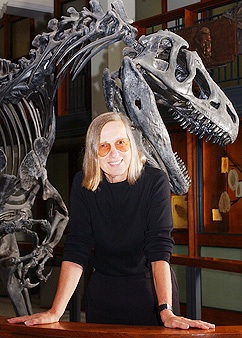
The team supports this view through an analysis of the Cretaceous-Tertiary (K-T) boundary containing anomalous levels of excessive iridium (the evidence for an asteroid impact) at 12 sites (including the Yacatan peninsula and in independent locations such as in Beloc, Haiti). More detailed analysis showed how the Chicxulub crater predates the Cretaceous-Tertiary boundary by about 300,000 years after examining the pattern of reworked glass spherules ejecta (another form of evidence for an asteroid impact) in higher quantities above the K-T boundary.
Because of the different layers for the spherule ejecta material and the iridium anomaly in the K-T boundary, it is difficult to see the two as part of a single impact event. Some scientists tried to reconcile the difference by saying a megatsunami allowed the ejecta material to settle first before the finer iridium layer deposited on top. But this should have occurred in a matter of days after the impact.
However Keller and colleagues noticed at various sites how the layers are separated sufficiently and contained microfossil evidence of burrowing organisms in between the layers suggesting a much wider time frame. That time frame has been calculated in the hundreds of thousands of years, not a few days.
These results were presented on 24 October 2006 at the annual meeting of the Geological Society of America in Philadelphia, USA.
Just one problem: evidence for the second crater or craters responsible for the mass extinction remains elusive and as such it should be called Keller's hypothesis. Nevertheless, it is an interesting point-of-view requiring further work by other scientists to get to the bottom of this catastrophic event(s).
UPDATE
2 December 2006
A research team led by Professor Ken MacLeod of the University of Missouri-Columbia has released findings in the Geological Society of American Bulletin stating in the words of Professor MacLeod:
"It's a completely straightforward, single-impact scenario. It was a haymaker that nobody saw coming. One shot, and that's all you need to explain it." (Dunham, Will. The Sydney Morning Herald: Dinosaur's end: new study backs one-shot theory. 2-3 December 2006, p.19.)
The evidence presented this time involved a sediment core drilled below the ocean nearly 4,500 kilometres from the Yacatan impact site. The distance is important because any drilling at the impact site would not deliver accurate results following the expected earthquakes, landslides and other events that would come to alter the impact site. On extracting and analysing the core, the scientists have found a single layer of impact-related material. There is no additional layer above or below the main layer. The only explanation based on this finding: the event that ended the dinosaurs was a single catastrophic event.
As of August 2010, scientists believe a single asteroid had caused the extinction of the dinosaurs. The latest details are available in the 1-hour long 2009 National Geographic documentary titled 24 Hours After: Asteroid Impact.
Some people of speculated what would have happened if the asteroid had not impacted the Earth or had hit a much larger and deeper body of water, such as the oceans? Would dinosaurs continue to live? And if so, what would they look like today? It is difficult to be certain how things could have turned out in this scenario or what this would have meant for human existence, but it is likely we could have stayed as small furry creatures surviving in the forests. Although it is possible the forces that drive our desire to survive could see highly intelligent mammals evolved in the trees with large eyes and potentially a large brain. The problem complicating this situation is how the dinosaurs, especially those smaller ones on the ground, might also be driven to survive and become highly intelligent. Perhaps we could have had more humanoid-like reptilian animals that eventually dominated the Earth with its own technology. But then again, the way evolution changes animals, it suggests that the reptilian design is probably just one early phase and eventually it would develop into the mammilian phase once the organ needed to stay warm was developed. All it needed were some courageous reptiles learning to adapt to colder regions of the planet to eventually see evolution provide the necessary solution to staying warm.
The reality is, no one really knows for sure. This is just a hypothetical scenario that could lead to many possible outcomes. One thing is certain, evolution would have continued for both the mammals and dinosaurs for another 64 million years. It is anyone's best educated guess as to what would have been the outcome today. Here is one view from Andrew Forrest, Chief Engineer at Solstad Offshore (2005–present), of what is possible:
"We would not see the dinosaurs of 65 million years ago still around if they had not been wiped out by the Chicxulub impact all those years ago, but rather dinosaurs that have had 65 million years of evolution behind them. Mammals of course would have had the same evolutionary time frame, but with entirely different survival pressures than what we have seen in prehistory.
How this would have panned out is entirely speculative, but one thing is clear, we would not be here at all. Any change in the initial conditions will result in a divergent outcome further down the track, and there is nothing about us that screams out as a universal feature apart from our intelligence, all other features are mere circumstantial peculiarities. There may well have been some other form of intelligence that arose, but it’s not clear that intelligence is a forgone conclusion in the race for the best survival prospects. Maybe there would be an intelligent reptilian species that would emerge to dominate the food chain, or maybe the mammals would have developed intelligence even earlier as a response to the continued pressure placed on them by the dominant dinosaurs."